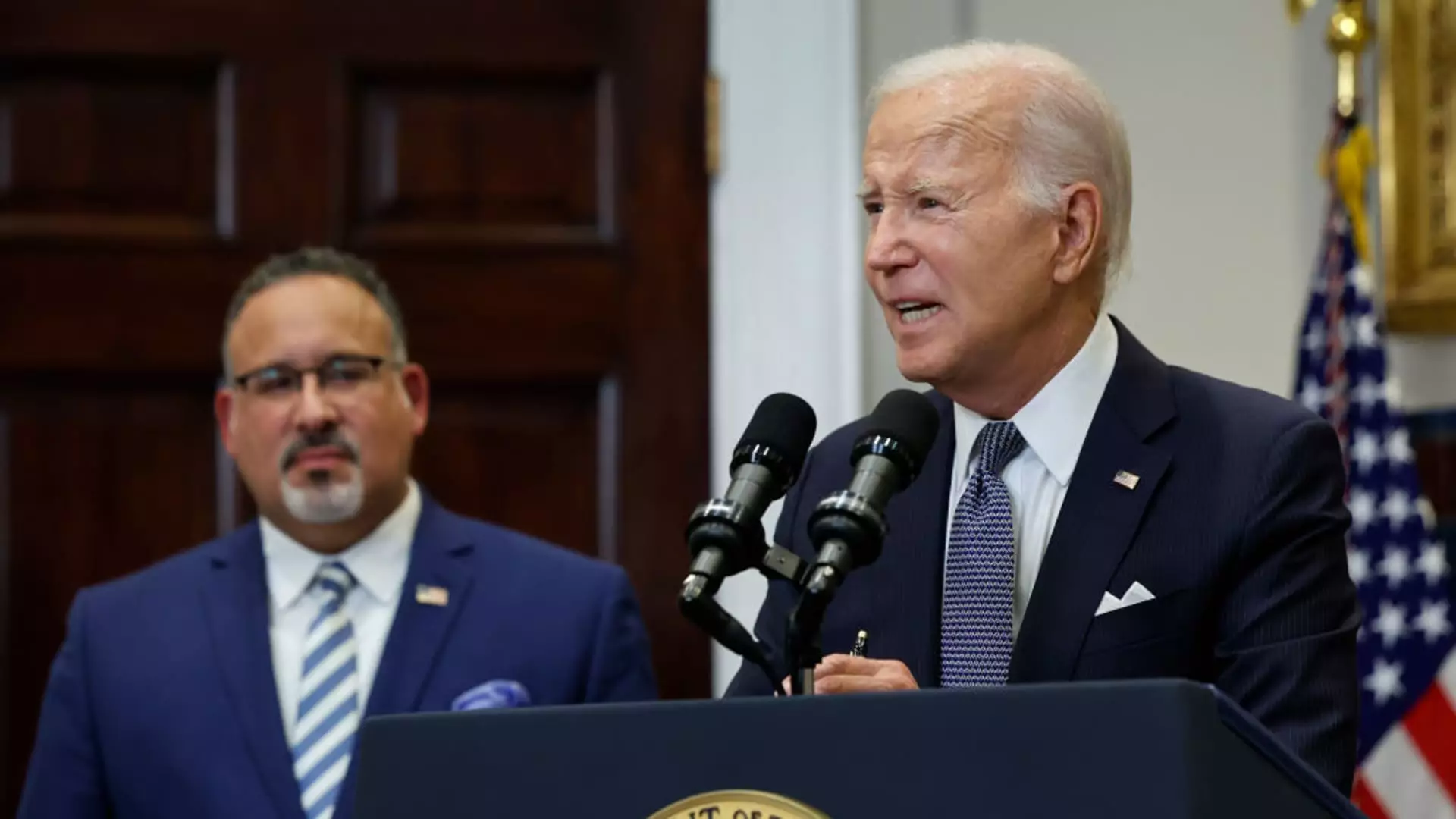For the first time in nearly half a decade, borrowers who have defaulted on their federal student loans are facing the stark reality of collection activities, including wage and retirement benefit garnishments. This policy shift has emerged from a recent memorandum released by the U.S. Department of Education, signaling a pivotal moment in the management of federal student loan debt amidst a backdrop of significant economic and policy changes.
The memo, which was made accessible to CNBC, outlines essential details about when and how these garnishments may begin, projecting that some actions may commence as early as summer 2024. The backdrop of this decision is crucial to understand; the United States has witnessed a worrying rise in student loan defaults, with the Department of Education estimating around 7.5 million borrowers in default by 2022. This alarming figure has prompted comparisons to the tumultuous mortgage crisis of 2008—a clear indicator of the urgent need for effective management and intervention strategies to mitigate the impact of student debt on individuals and the economy as a whole.
The Biden administration has taken notable steps to alleviate some of these concerns by implementing an “on-ramp” to repayment following the expiration of the COVID-era pause on federal student loan payments. This initiative provided a gentle transition for borrowers, temporarily shielding them from the adverse consequences of late payments until September 30, 2024. However, the expiration of this relief period signals a return to stricter collection measures, which could significantly affect millions of borrowers who are struggling with mounting financial pressures.
As laid out in the memo by U.S. Undersecretary of Education James Kvaal, it is crucial for the Department to re-initiate collection efforts compliantly and effectively, thus enabling the agency to navigate loan defaults proactively. The memo conveys a clear intent to ensure that the transition back to collections is handled with care, emphasizing the need for supportive initiatives to help borrowers remain current on their loans.
One primary strategy includes easing the enrollment process into affordable repayment plans, particularly income-driven repayment plans that allow borrowers to pay based on their income levels. These plans often result in significantly lower payments, with some borrowers potentially qualifying for a $0 monthly obligation. The automatic enrollment provisions, which permit the Department of Education to use IRS data to streamline the repayment process, could alleviate stress for many individuals grappling with financial difficulties. However, the effectiveness and accessibility of these measures are contingent on widespread awareness and proactive outreach.
Forgiveness and Protection Measures
Another significant aspect of the memo is the commitment to screen borrowers for various forgiveness opportunities before they slip into default. By leveraging data from other federal agencies, the Department aims to identify those who may qualify for forgiveness, thus potentially unlocking more favorable outcomes for a significant number of borrowers. This innovative approach, advocated by education expert Mark Kantrowitz, highlights a need for a more comprehensive strategy that encompasses all borrowers, not just those on the brink of default.
Furthermore, the memo also hints at potential enhancements to the existing interest rate incentives for borrowers who opt for automatic payments. Currently, borrowers can enjoy a small reduction in their interest rates, but increasing these incentives could motivate many to engage with their repayment plans more actively. However, the feasibility and implementation of these proposed enhancements remain uncertain under the shadow of the incoming Trump administration, given that policy changes often face scrutiny in the transition period.
Social Security Benefits and Collection Fee Adjustments
As the Department prepares to reinstate standard collection activities, crucial adjustments have been made regarding the protection of Social Security benefits from federal collection efforts. With the memo stating that individuals receiving monthly Social Security benefits below $1,883 will have those amounts protected from offsets, it reflects a more nuanced approach to collection measures that responsibly considers the welfare of vulnerable borrowers. This protective shift safeguards many individuals who rely on these benefits for their daily sustenance while maintaining a focus on effective collections.
Another promising development noted in the memo is the elimination of most collection fees associated with federal student loans. This advancement signifies a potential easing of financial burdens on borrowers, as these fees often exacerbate the challenges faced by individuals already struggling with debt.
The resumption of collection activities on federal student loans introduces substantial challenges and uncertainties for millions of borrowers. While the Department of Education’s proactive approach in implementing supportive measures could offer some relief, much depends on effective communication and outreach. The landscape of federal student lending is volatile, and as collection efforts resume, it is critical that both borrowers and policymakers remain vigilant in addressing the root causes of loan defaults. Striking a balance between necessary collections and borrower welfare will be key to navigating these turbulent waters ahead. The coming months will reveal whether these initiatives can successfully mitigate the financial strain on borrowers while ensuring accountability in the federal student loan system.

